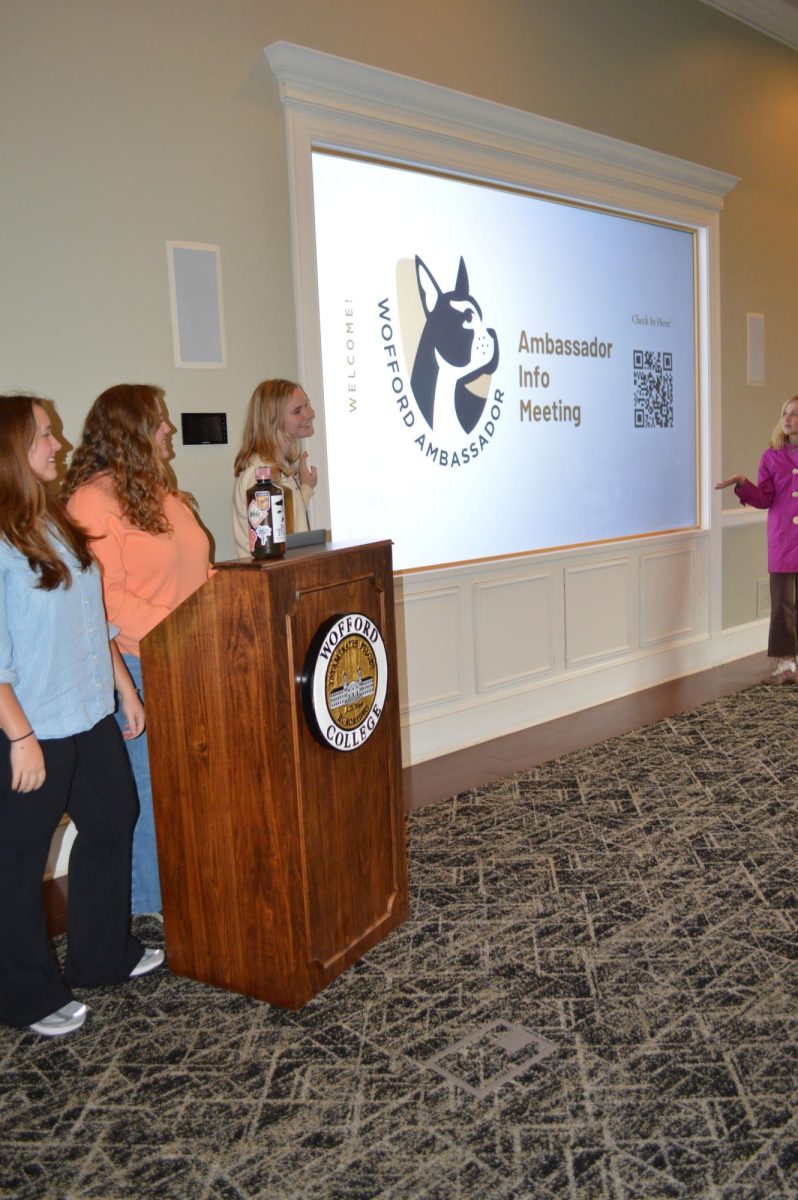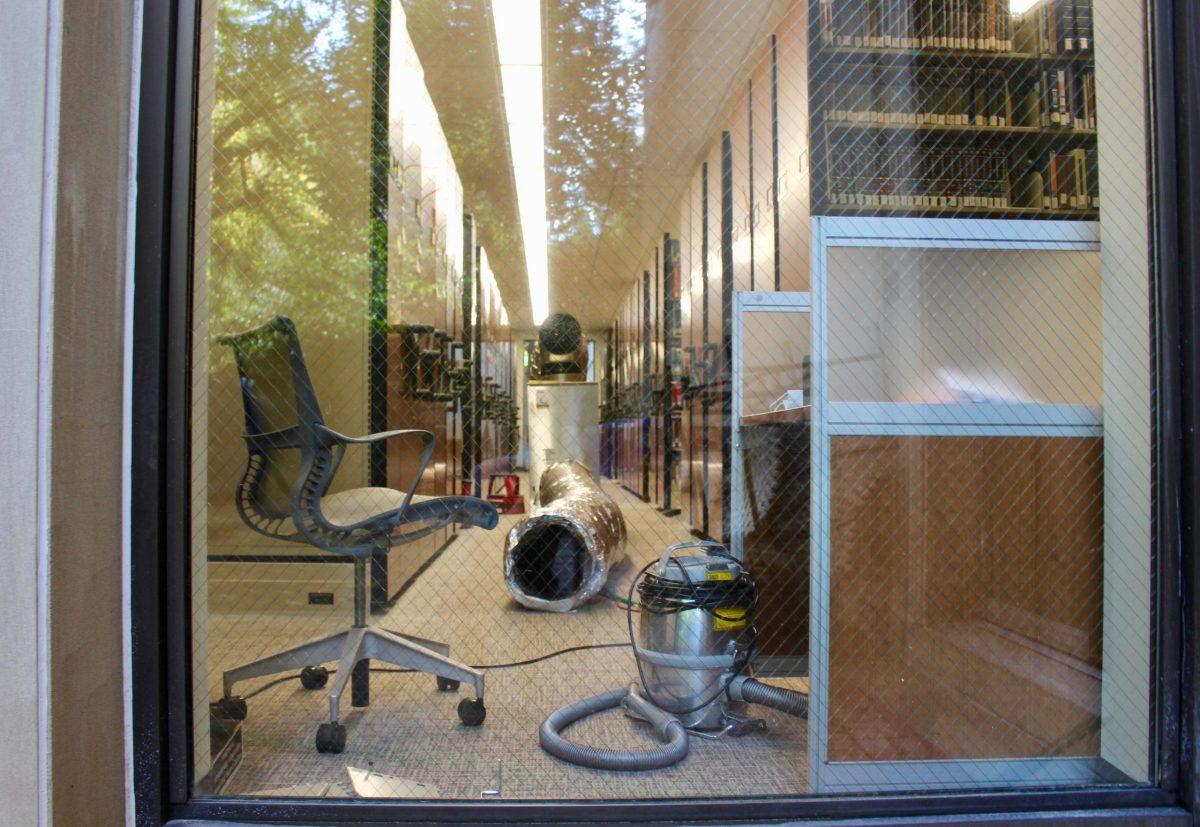Library staff navigate mold outbreak, work quickly to reopen collection
Last year, with the renovation of the Sandor-Teszler Library in its second phase, the modernization of the campus’ research hub called for the physical collection—the books—to be moved downstairs to be centrally accessible in a compact shelving system.
On Monday Sept. 28 of this year Angela Brown, the library’s Evening and Weekend Assistant, went to retrieve books that were requested through the contact-free checkout system to find a row with a significant amount of mold. After alerting Circulation Coordinator Kenneth Herniman, further investigation was conducted, and the library staff quickly found that the mold was not isolated to one spot.
Swift action was taken by the staff and administration and facilities were alerted. Dehumidifiers were placed in the Circulating Collections room to stabilize the humidity levels in the space while a plan was devised.
“The nice thing,” Lisa Roberts, Dean of the Library said, “is that it’s on a completely separate air handling unit so we were able to control the airflow. So, there wasn’t anything leaving that room going anywhere else in the building.”
Early the next morning, it was clear to the staff that the library would not be able to circulate books due to the extent of the mold.
Roberts said, “I literally did a search shelf-by-shelf through the entire collection to determine how many of the rows had at least one shelf with at least one moldy book… and literally determined that there wasn’t a single row that was completely mold free. At that point we knew we had an extremely extensive problem.”
The facilities team brought in different contractors and environmental consultants to first find out the type of mold that was covering the books in question, and the team found that it was a high humidity mold that was not dangerous.
With the environment stabilized and the mold identified, remediation strategies were next on the docket. The question was, ‘How can we solve the root of the problem so it doesn’t return?’
Remediation contractors, specializing in library recovery, were brought in to assess the books and help develop a plan for the library to quickly and safely return to being fully operational. The answer, Roberts said, will be “bringing in air scrubbers to clean the air and the space and then they’re literally going to have to clean every surface: the ceiling, the walls, the floors, every shelf and every book.”
Before the recovery team is brought in to clean, the library staff is working diligently to evaluate the current collection and flag items that are past the point of being saved.
Roberts said, “Those will be considered a loss as part of this process and we will have to go through a process of rebuilding the impacted areas of the collection. So it is a fraction, a small fraction of the collection, but it literally means hand inspecting the entire collection.”
The library staff is remaining hopeful and see this as an opportunity to rebuild the collection, tailoring to the needs of today’s Wofford community.
“I’d like to think that by sometime in January we could be back to contact-free circulation again,” Roberts said, “certainly sometime in the spring semester.”
For the time being, Roberts wants you to know that all hope is not lost for your research projects and that the library is still brimming with resources. Via OneSearch, students can access Sandor-Teszler’s expansive digital collections and hone in on topics using the specific filters. Physical books can be requested from PASCAL and Interlibrary Loan through the Sandor-Teszler Library website as well.




























